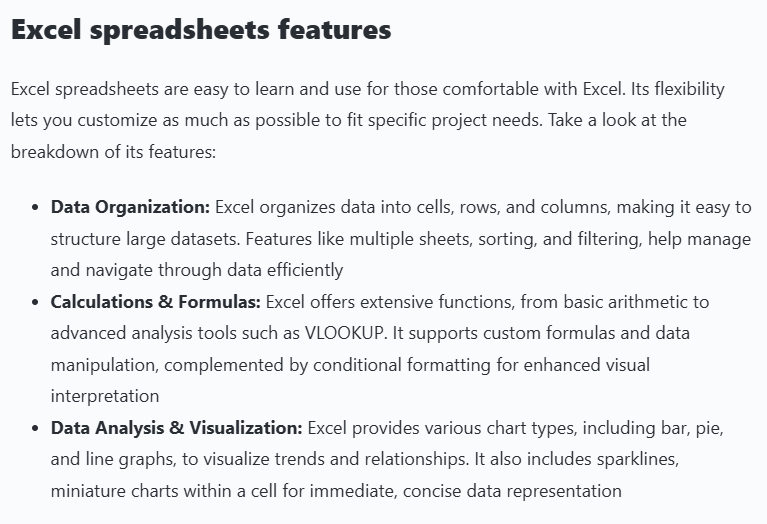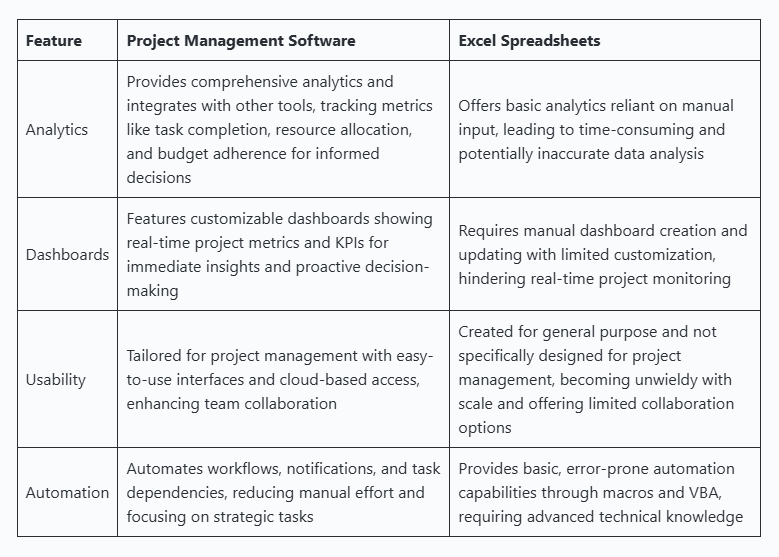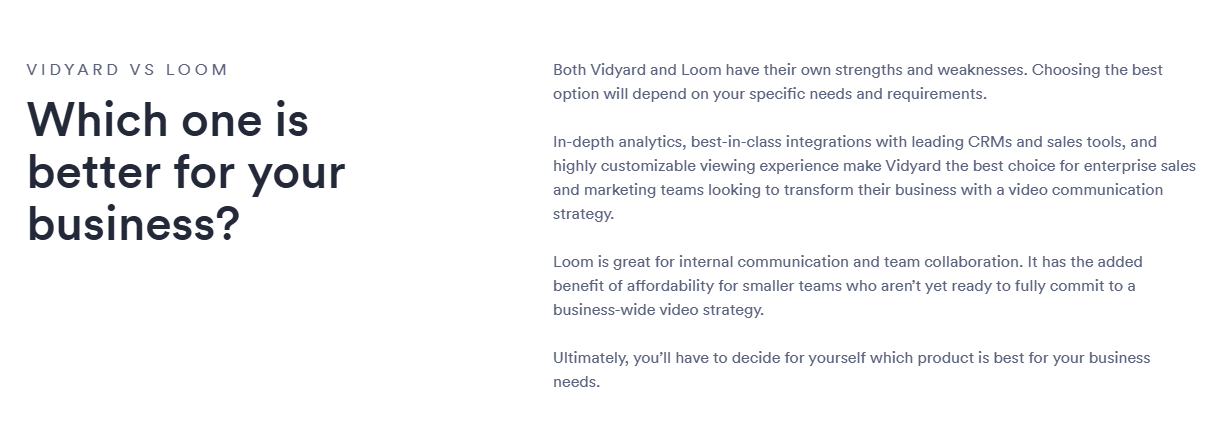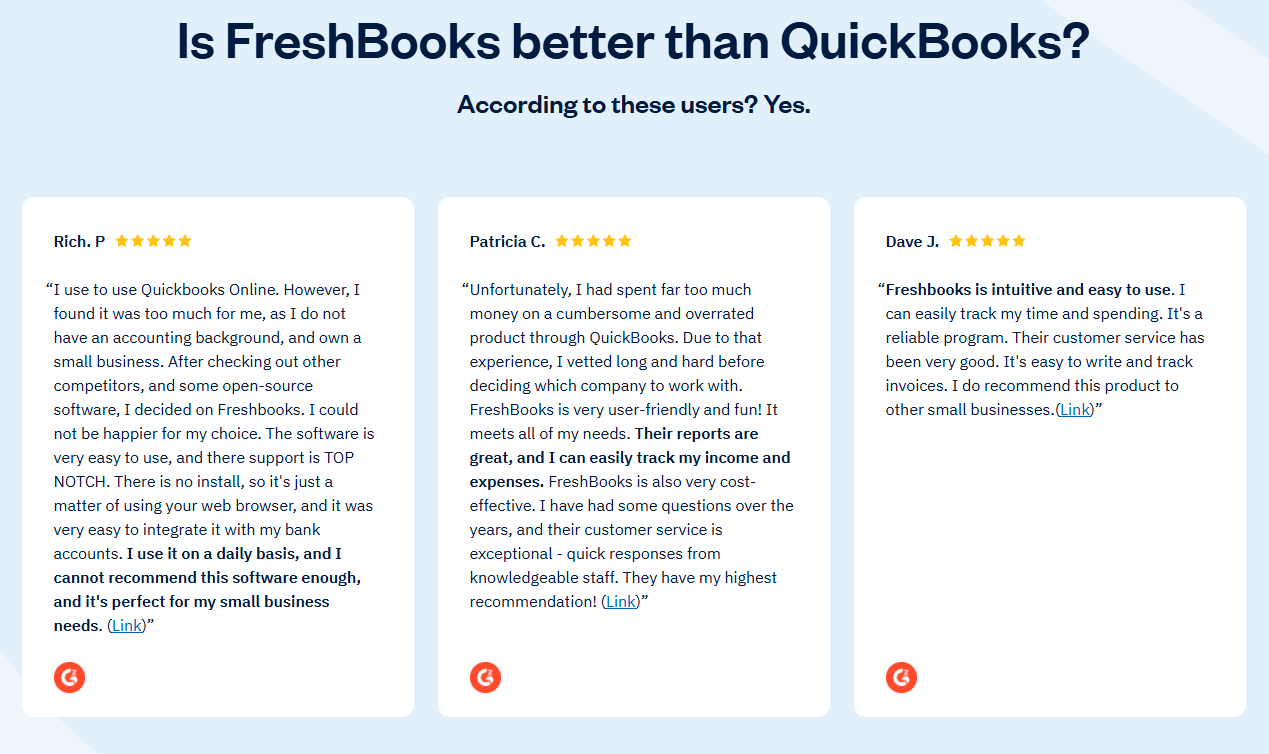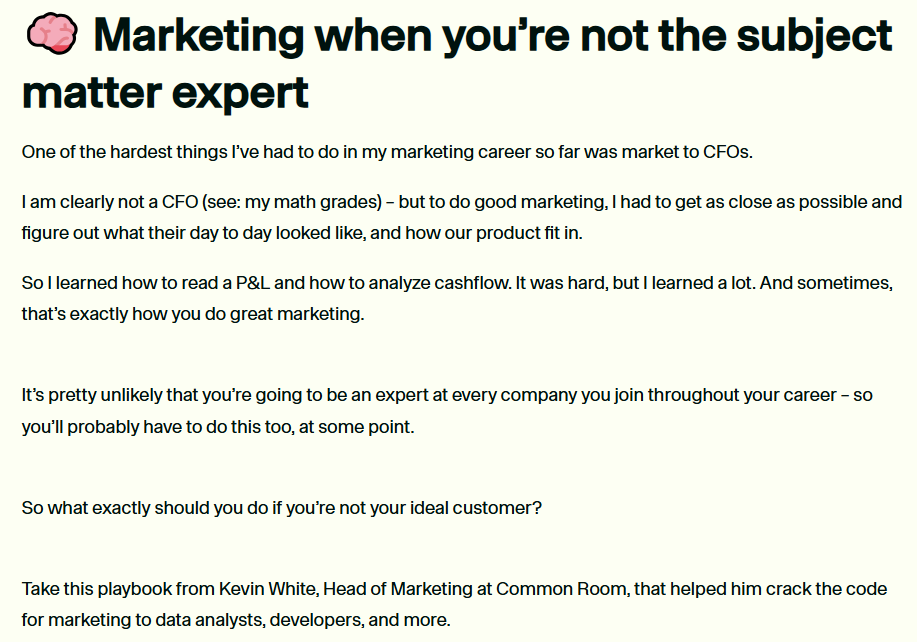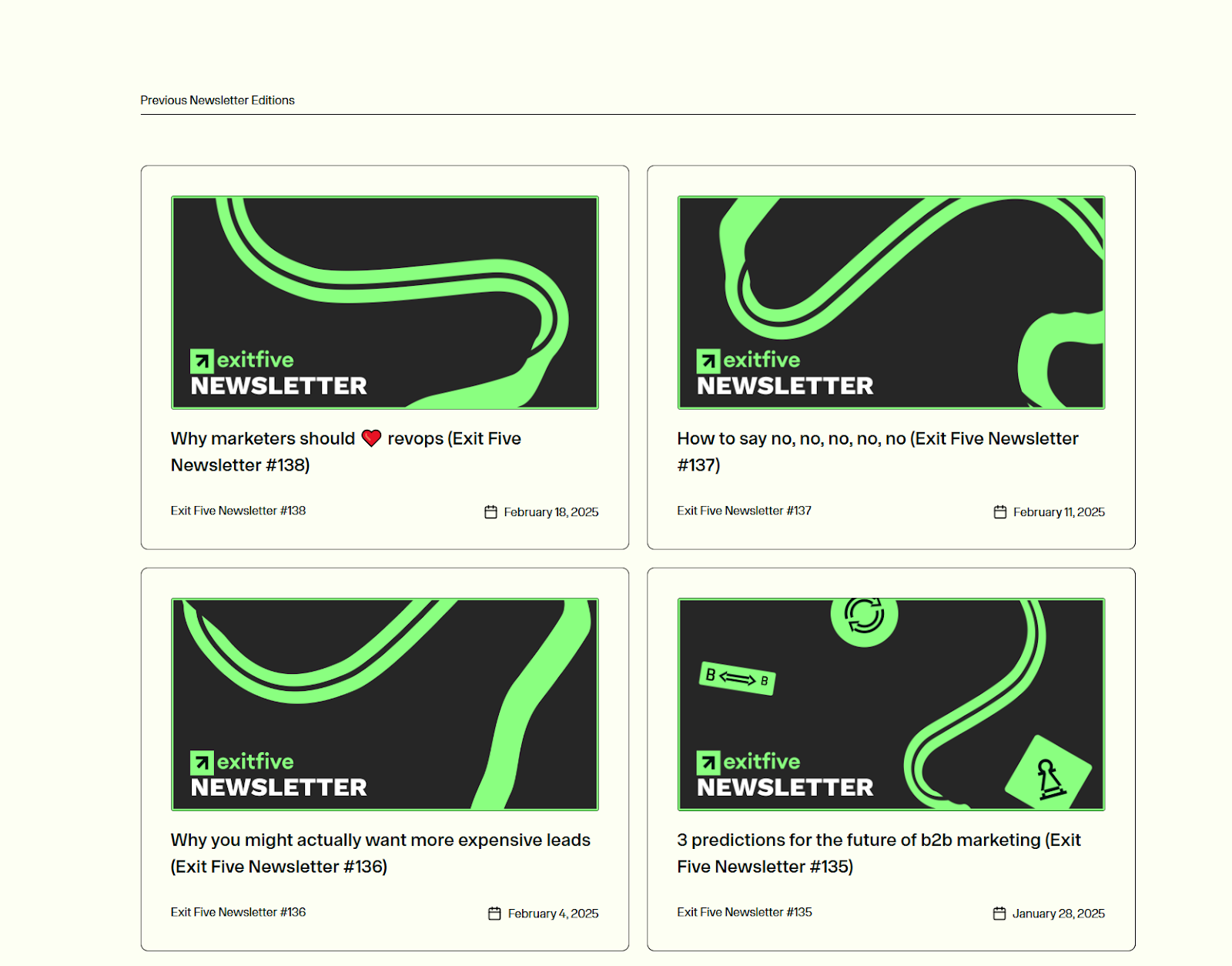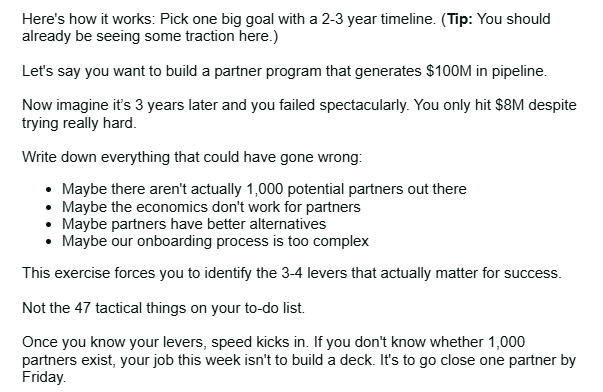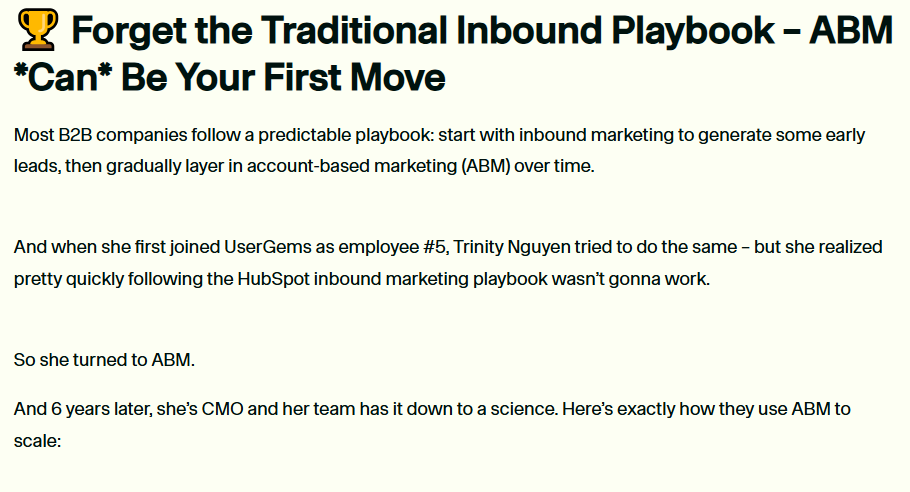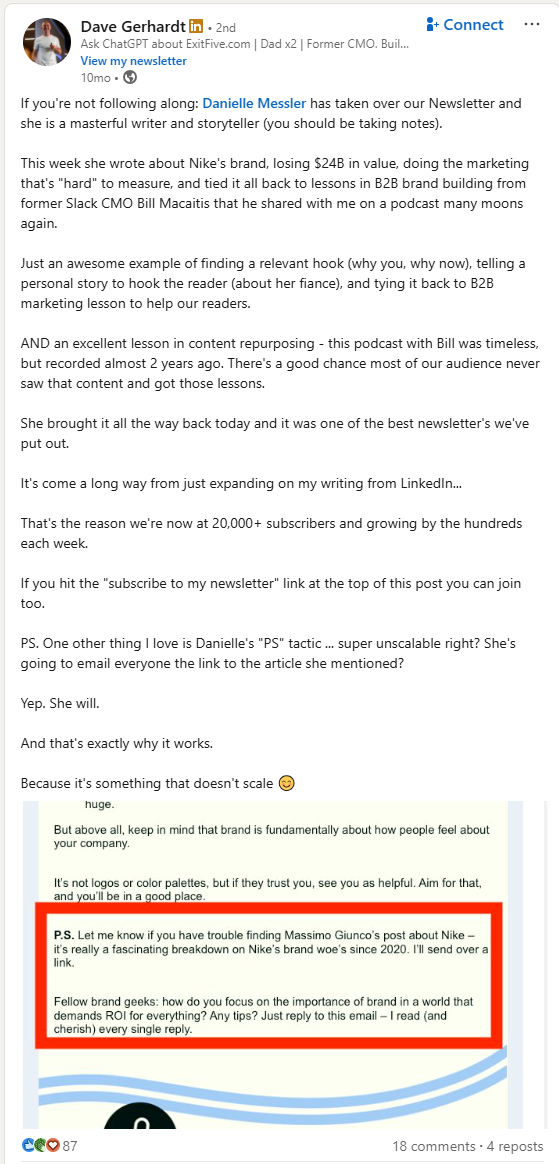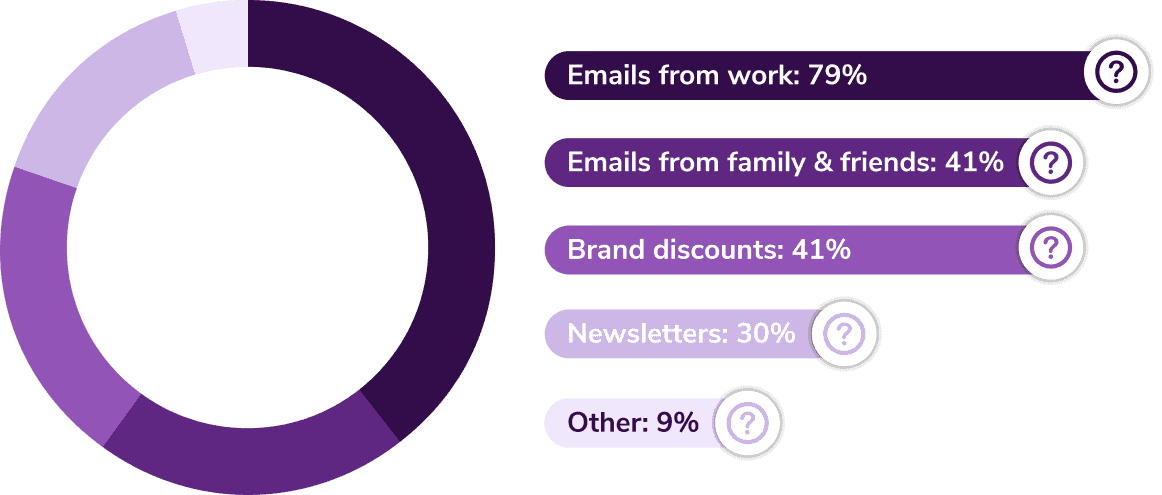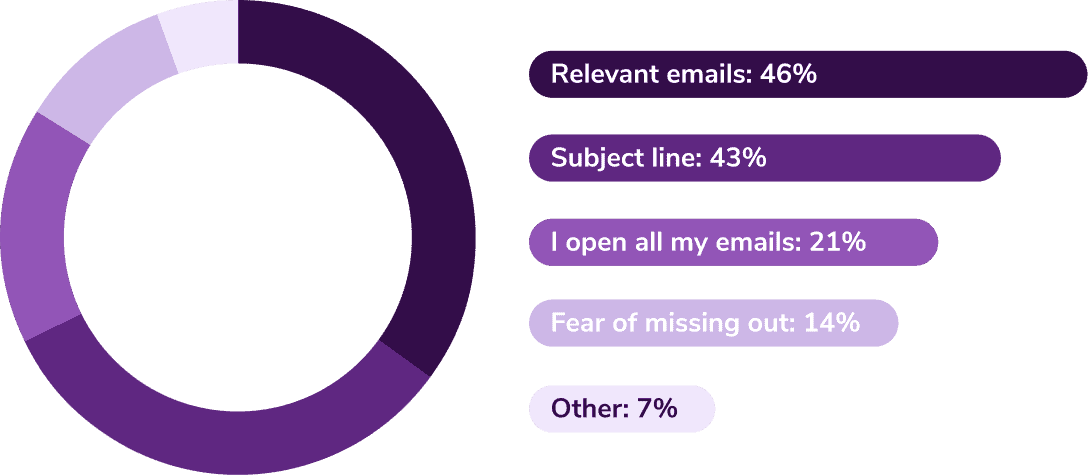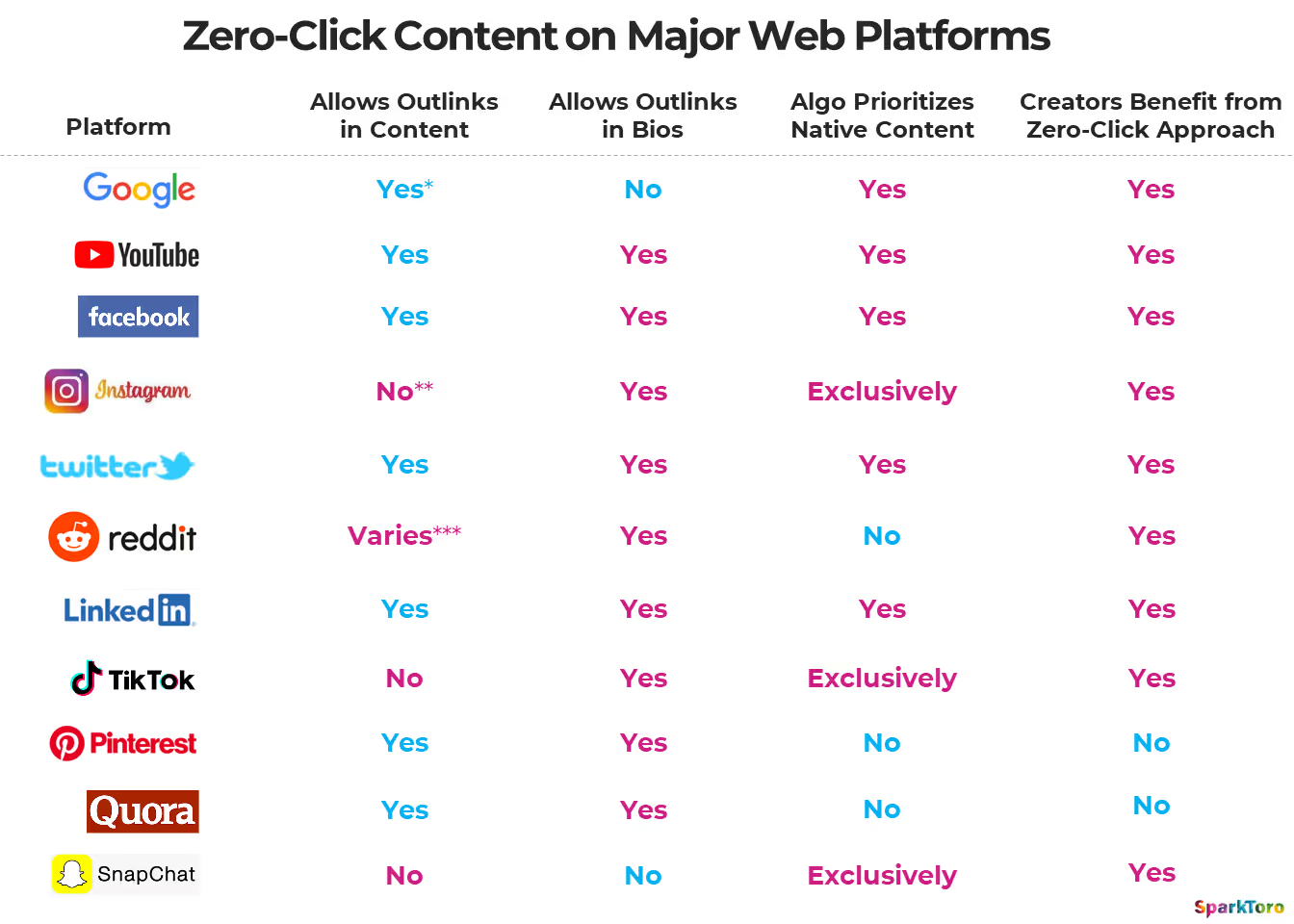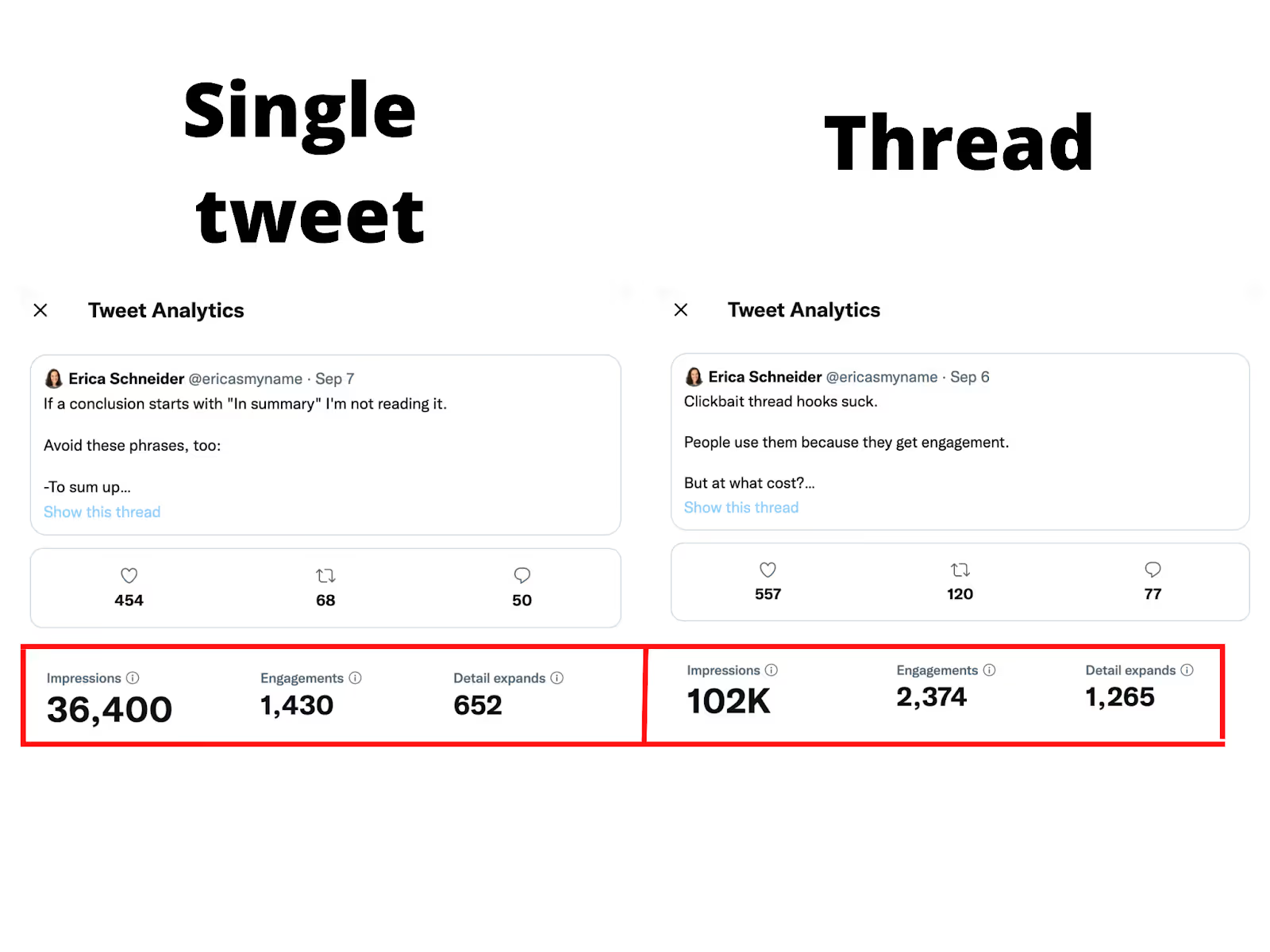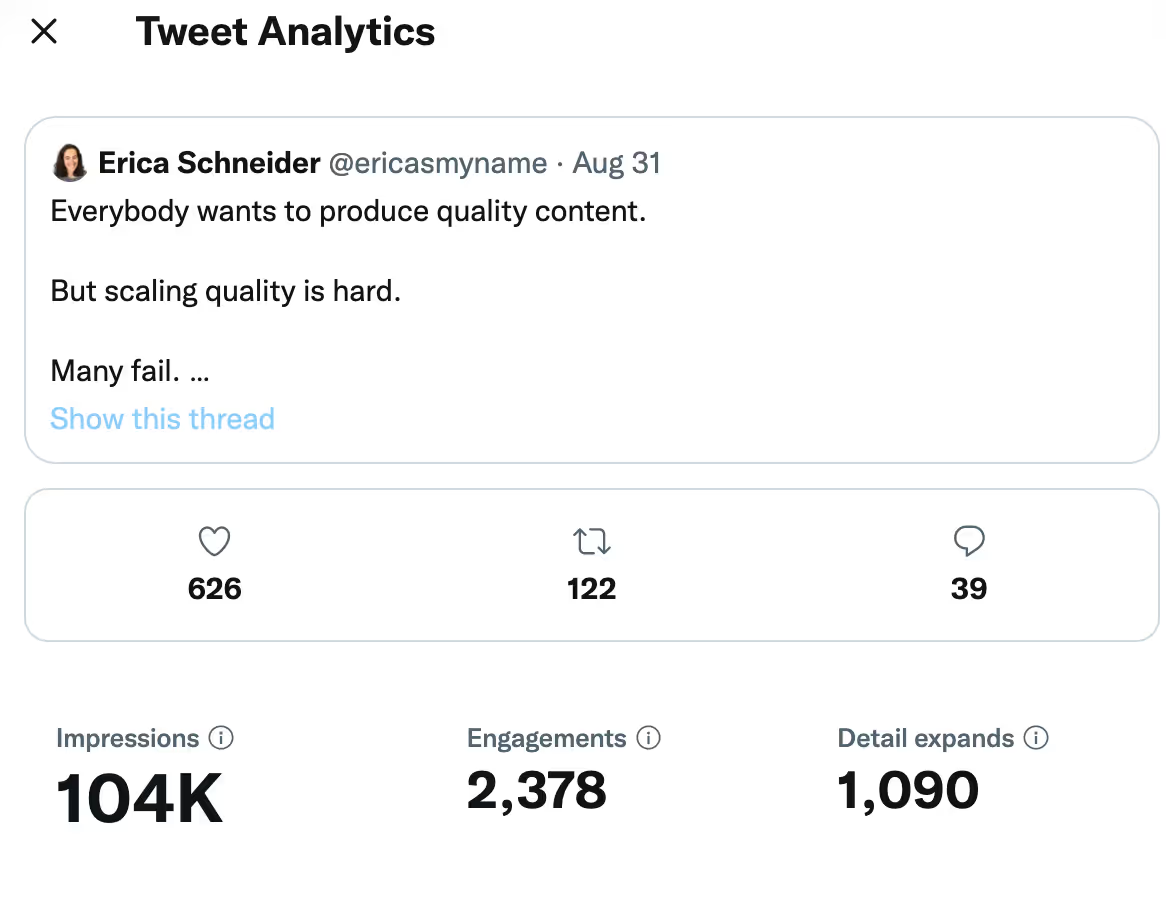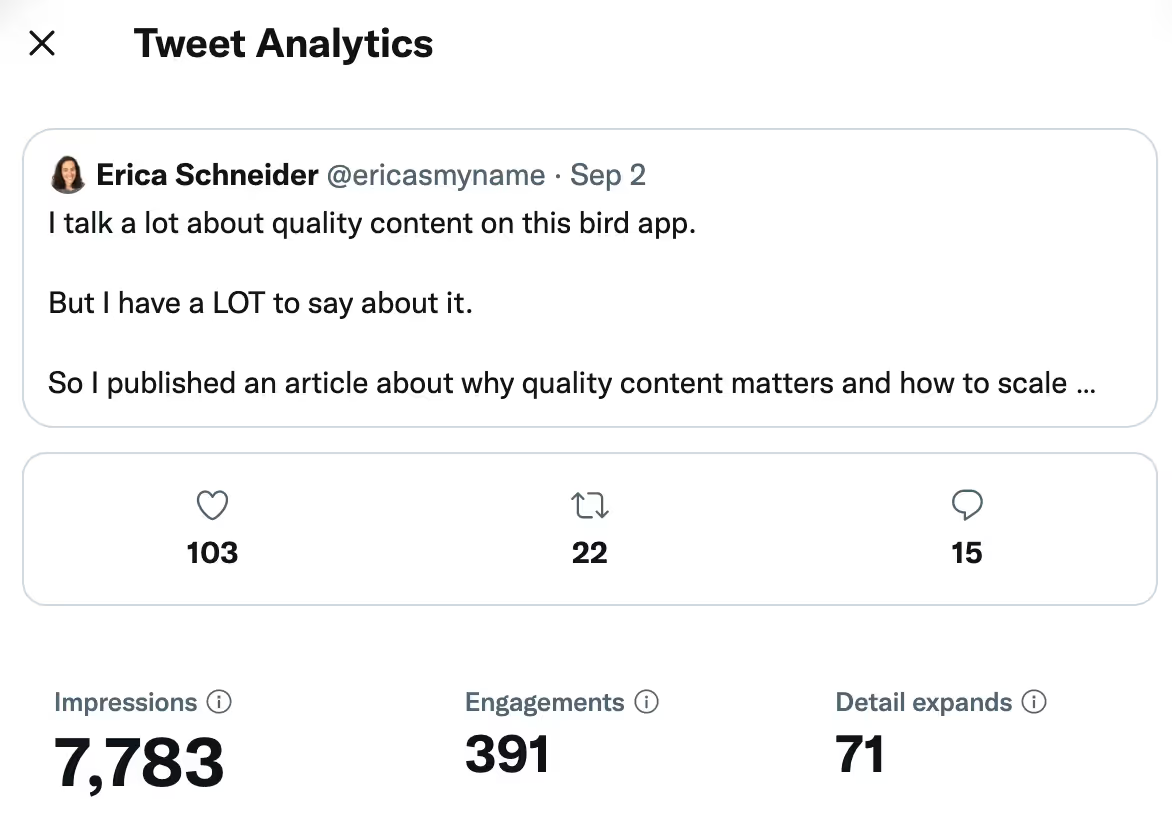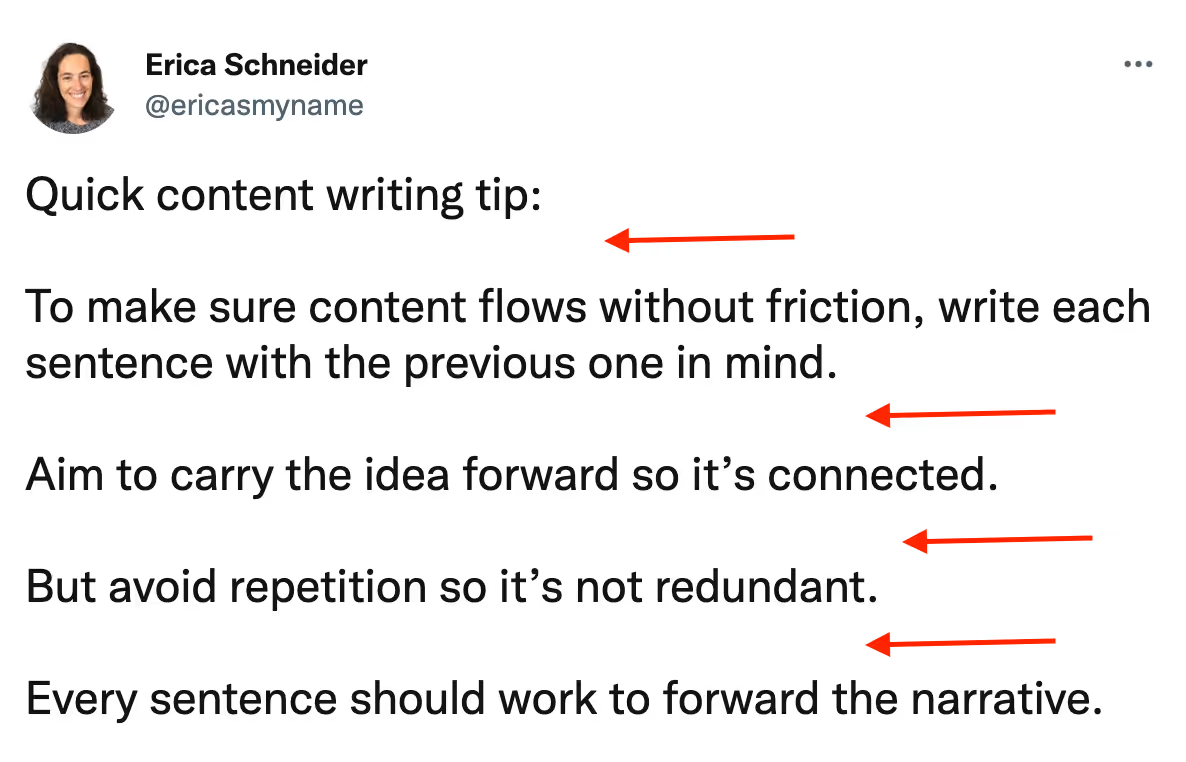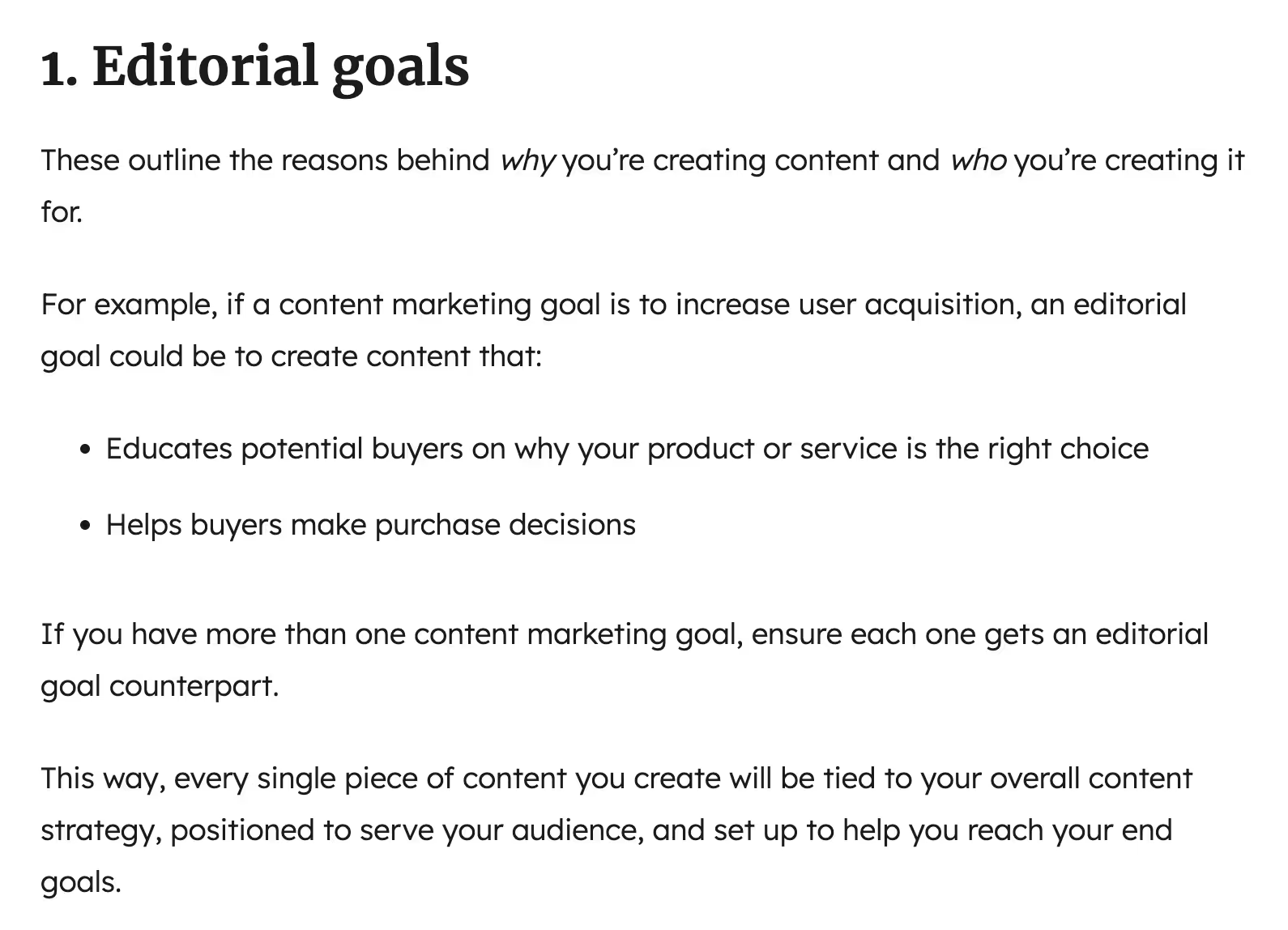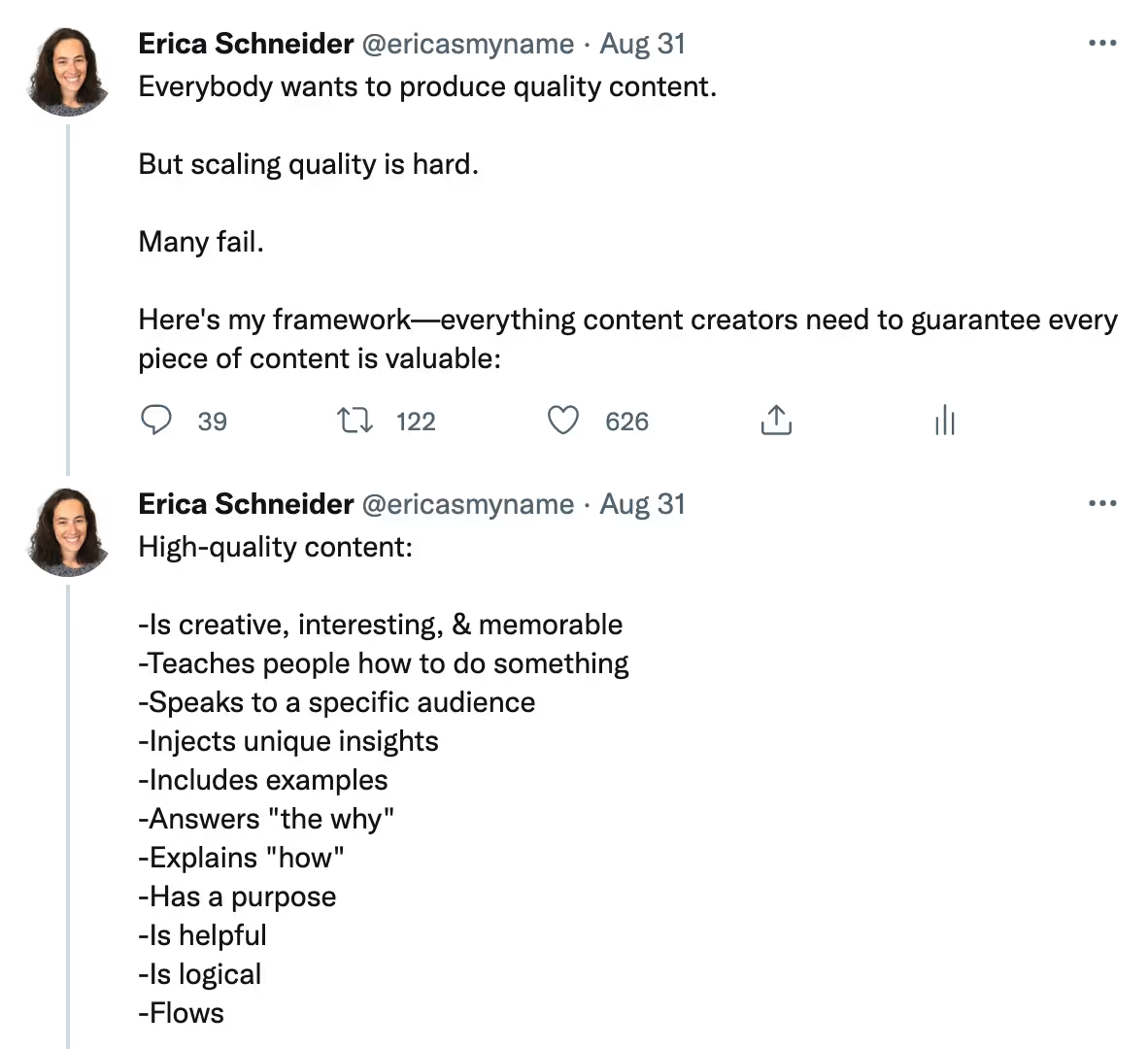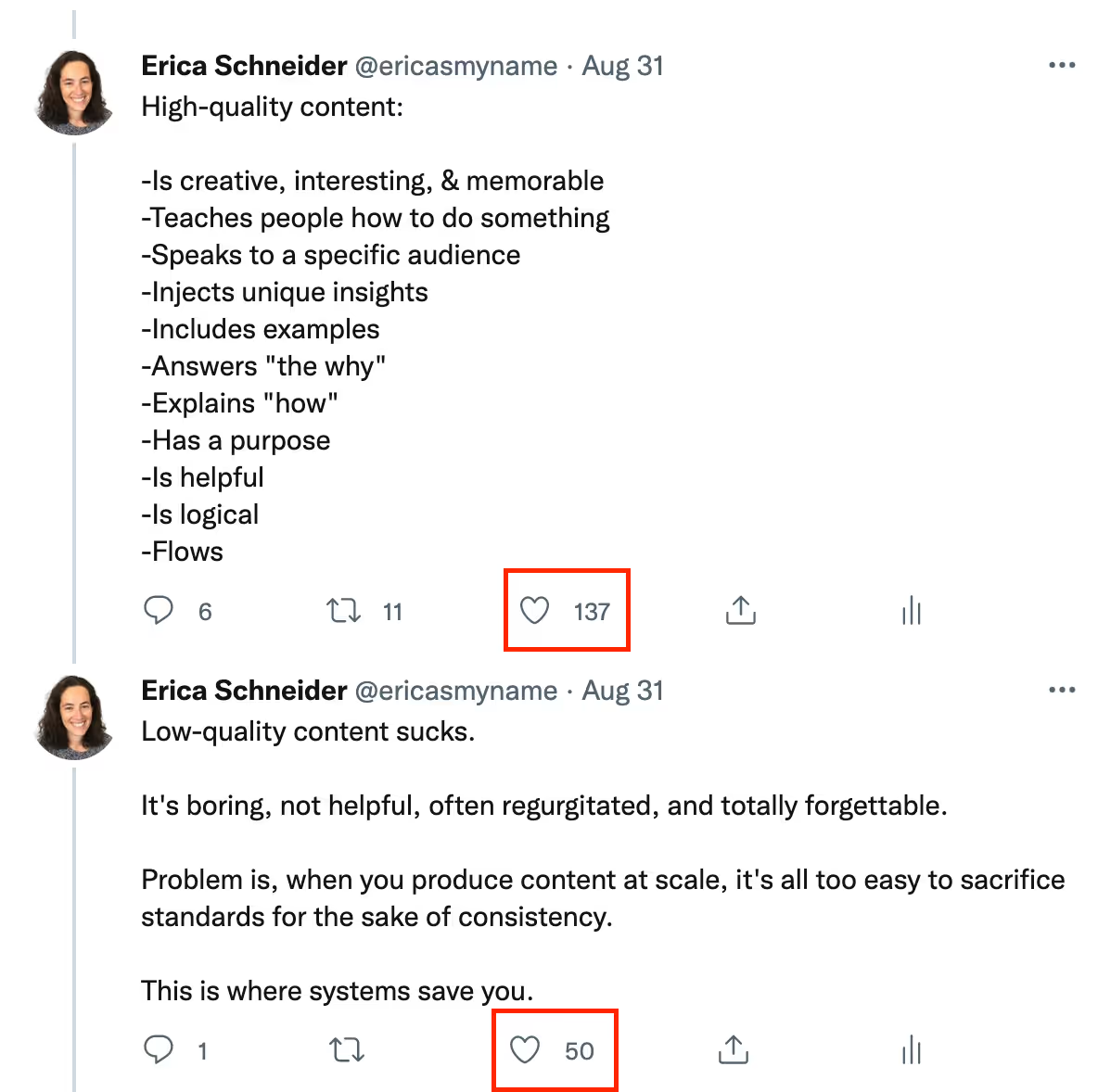Your content brief is the roadmap that paves the way for high-quality content.
Without a solid brief, you’re likely to produce content that fails to meet expectations. A good brief connects your strategy and traffic goals with expertise and audience needs.
After collaborating with dozens of clients, content marketers, and writers, we’ve found the best approach to removing production headaches is a strong angle, detailed outline, and collaboration at the brief stage.
Your audience, why this topic matters to them, and how you’ll inject your expertise should be crystal clear for every stakeholder.
This article will detail the process and components of a content brief that drives high performing blog posts, landing pages, and more.
Content positioning
Content marketing is suffering from a case of “blind leading the blind.” For SEO-driven content, research often starts and ends by reverse engineering the SERPs.
Reverse engineering Google is critical for search. However, it will hurt your credibility if used as your only research method. Copying other articles “because they rank” is symptomatic of a lack of subject matter expertise. Your buyers can smell it a mile off.
Solid research is the bedrock of a great content brief. Conducting SME interviews, taking inventory of your own experiences, and diving into the rabbit hole of a topic is critical when writing for skeptical and experienced audiences.
But let’s assume you’ve acquired this expertise and done your research. It’s time to create a content brief, but where to start?
There are two key steps that must be followed when beginning the content brief creation process:
- Analyzing the competition to see what they’re doing right, what they get wrong, and gaps they’re leaving open.
- Establishing a unique angle that will ensure your content stands out—no matter which channel you prioritize it for.
These two elements are the most effective ingredients to establish a strong position in the market. One will give you the data to make creative decisions, while the other will help you stand out.
This is what we call “content positioning.”
Content positioning means treating your content like a product, differentiating it in a competitive marketplace, and helping your ICP solve their jobs-to-be-done (JTBD).
How to find an angle that outperforms the competition
Content positioning requires an understanding of the value other articles are offering and how they’re currently getting attention.
To identify competitive gaps, you must first understand what you’re up against. There are three approaches to competitive content analysis:
- Content quality: What’s the overall quality of other articles? Do they lack value? Are they repeating the same conventionally held (yet incorrect) beliefs as everyone else? It’s often possible to outcompete on quality alone or by focusing on a hub-and-spoke strategy to build topical authority.
- Brand equity: Are you up against a number of industry incumbents? Do they have a monopoly on the topic, or are they dipping their toes in? This is a reality that should inform your overall content strategy, not just your brief. For example, a project management brand like Asana writing a one-off article on “remote working” is unlikely to have much authority on the topic.
- Distribution landscape: For SEO-driven content, how hard would it be to rank based on the number of backlinks other articles have earned? What’s the keyword difficulty for your primary term (as well as the average across your entire keyword cluster)?
Your findings will inform how you approach the production and distribution of your content. For example, you may find a top competing article from a startup has lots of backlinks, but is poorly written and contains little utility. This is a prime opportunity to outcompete by creating more authoritative and value-driven content.
Competitive analysis will help you inform your content positioning and create original blog articles. Here are three practical ways to apply your findings:
1. Finding unique angles for search
Too many content marketers continue to create content by reverse-engineering and emulating the SERPs. But this presents a deeper issue, as content begins to look the same and, over time, erodes the user experience.
While aligning content with search intent is critical for organic growth, it mustn't be followed blindly. Use the SERPs to evaluate competing content and identify gaps that you can fill.
For example, when writing an article on CRM technology, you might find that nobody covers how to evaluate and choose the right platform. Instead, everyone focuses on definitions, benefits, features, and the like.
In this scenario, you could include an entire section that teaches readers a process for evaluating CRM vendors. This creates a temporary moat around your content and provides the reader with more value in the form of practical next steps in their vendor research.
2. Communicating credibility and authority
Marketers often make lofty claims with no data or proof to back them up. This provides you with an opportunity to build a more credible and original piece of content.
Building authority is more than writing in the language of your audience. It means collecting or leveraging experience and expertise on a topic.
For example, if you’re writing for a senior marketing audience on ICP research, you’d ideally seek input from an expert that has experience conducting countless customer interviews.
Using your audience’s language will generate more engagement. But to build trust, don't just emulate their words, speak their mind. Reflect back what they're thinking but nobody else is saying out loud. This will build deeper emotional resonance and connections. These insights can only be gleaned from someone your reader would consider a peer.
3. Be controversial
In marketing, zigging while everyone is zagging can be all you need to differentiate yourself.
Rand Fishkin, founder of SparkToro, did this when a customer asked for advice on cold outreach. After searching Google, he found the SERPs contained repetitive and outdated advice:
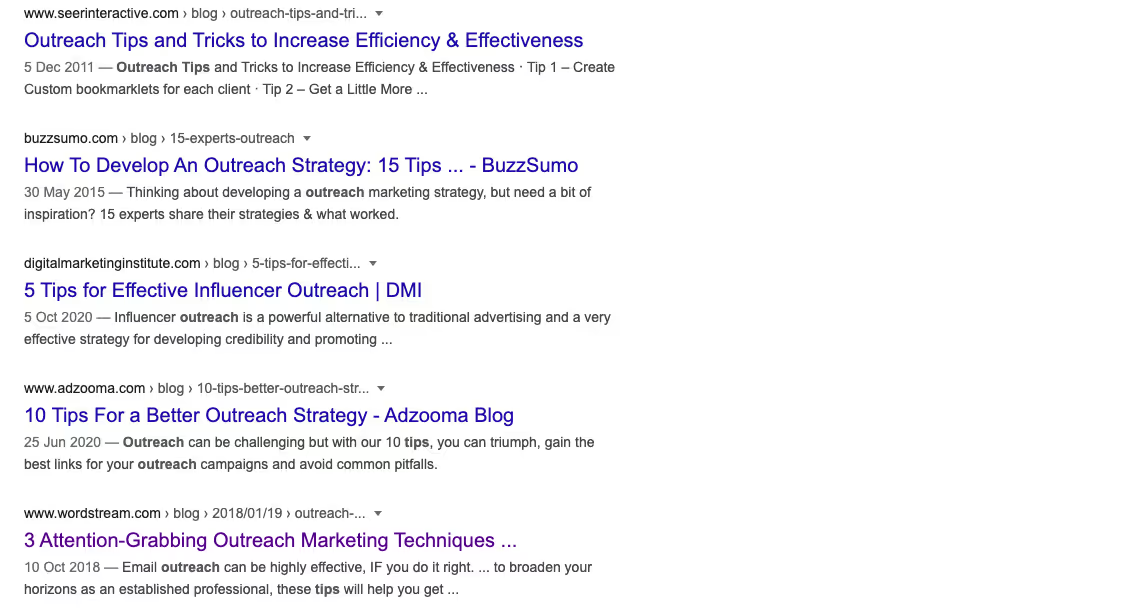
So he decided to write an article on the topic to call out these outdated practices, titled “Outreach Tips (better than anything you’ll find searching Google):”
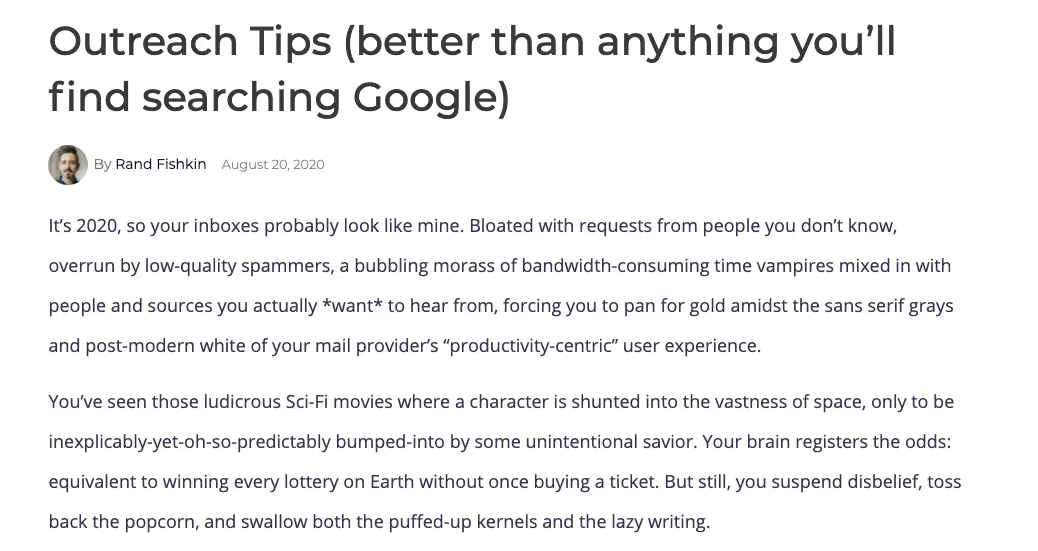
He opens up with a controversial introduction before moving on to a subsection that promises the reader eight tips they won’t find anywhere else.
This article is one of the most commented on the SparkToro blog and ranks below the featured snippet for the term “outreach tips:”
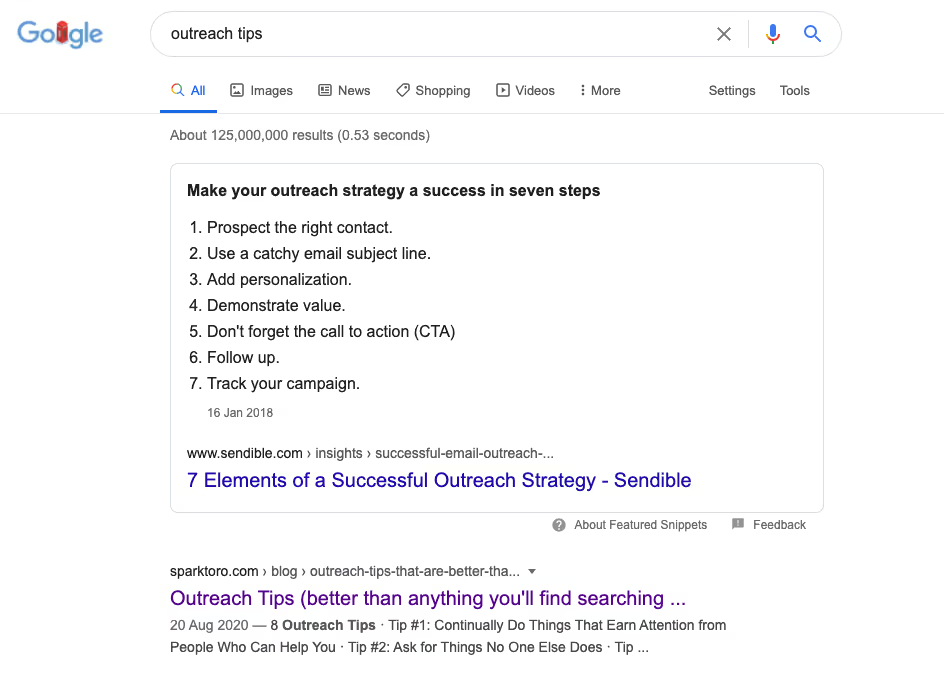
[[component]]
When a seasoned marketer or salesperson next searches for cold outreach tips, which result do you think will stand out in the SERPs? We’d hazard a guess that Rand’s article gets the lion's share of clicks.
A controversial angle breaks the mold and grabs attention in a sea of sameness. Allow your content to stand out by framing it around earned, accurate, and proven advice.
Building an outline using data & creativity
A good outline creates context around your content and communicates the narrative to other stakeholders involved in the production process.
Including a clear objective will keep everyone aligned on outcomes and avoid the problem of “too many cooks in the kitchen.”
Let’s say you’re a SaaS startup and your primary goal is “generating organic traffic with high buying intent.” In this scenario, your article should sit within the sweet-spot of these three areas:
- Algorithm: What themes, questions, and sections has Google deemed important for the user to fulfill search intent?
- Audience: What are your customers hungry for and what gaps are competitors leaving unfulfilled?
- Product: How will your content align with your value proposition, solution, or product?
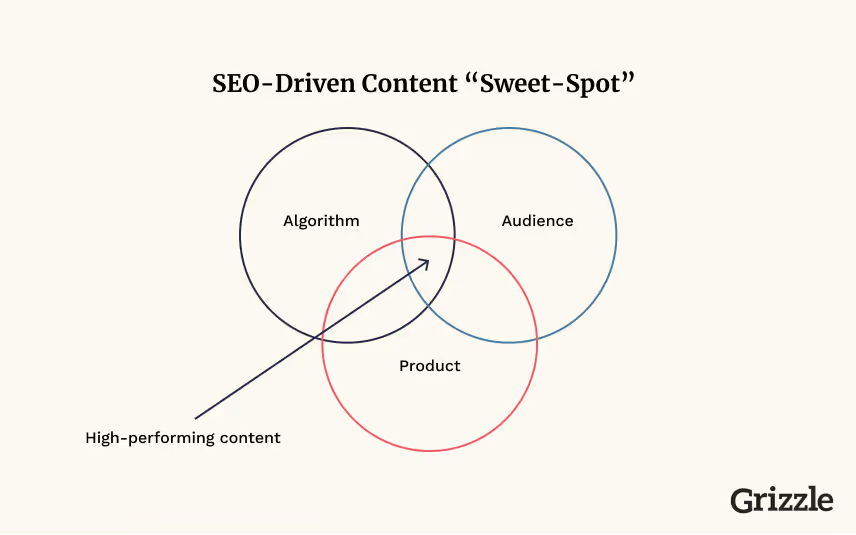
Templates and frameworks can guide you through the production process and reduce the friction in getting started.
For example, a “how-to guide” template follows a step-by-step instructional narrative, which is perfect for anyone targeting individual contributors looking to solve a problem or JTBD.
Alternatively, when targeting senior decision makers, you might use a framework that outlines their problem, builds an argument for new solutions, and demonstrates a new way of doing things.
Use tools like Clearscope when planning SEO-driven content to uncover which themes to include. Here’s what some of those relevant terms look like for the term “DOOH” (digital out-of-home media):
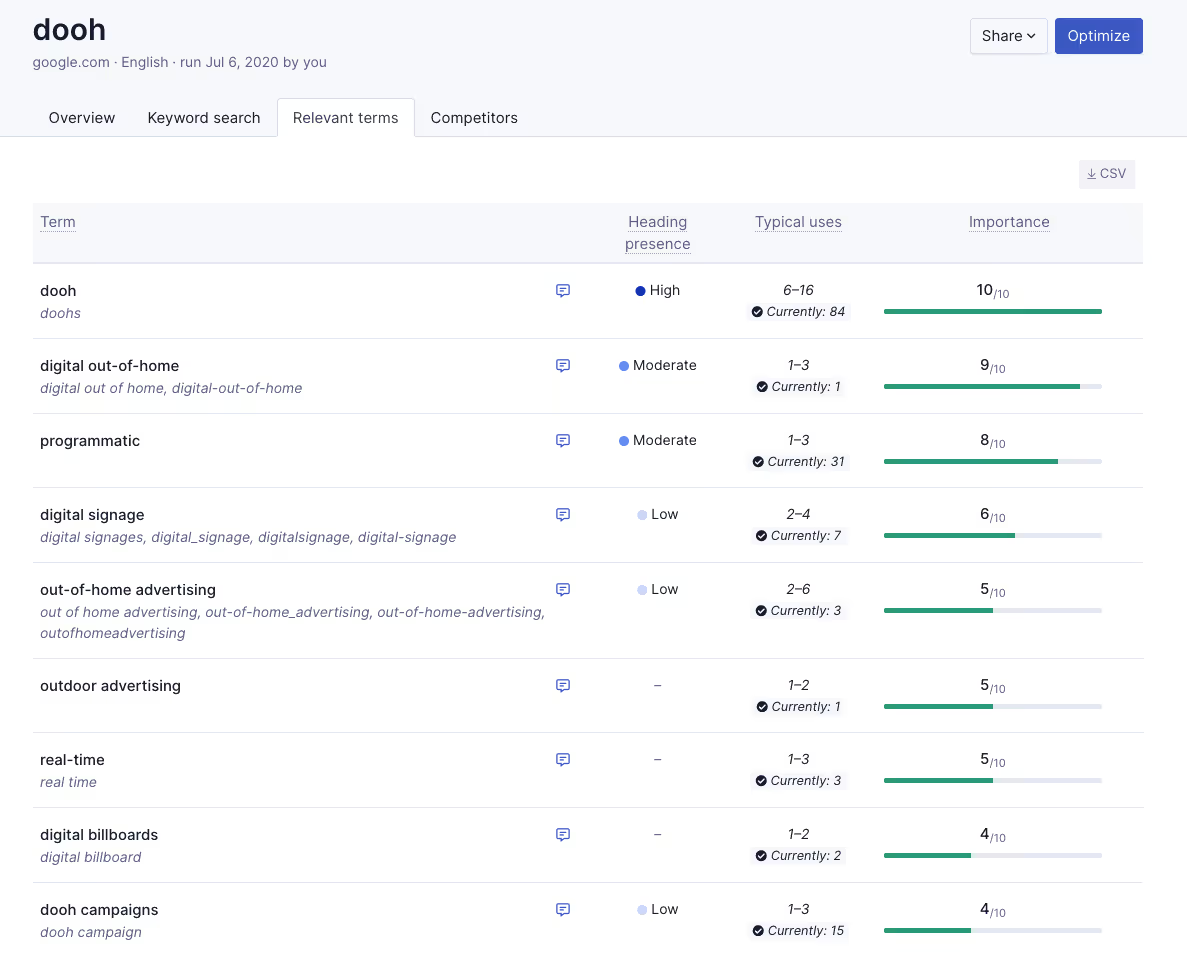
Avoid stuffing these terms without context, as you’ll ruin the content experience and undermine trust. Use this data to inform sections and themes to include in your content.
Finally, don’t worry about perfecting the subheading copy. Subheadings should simply communicate what each section will cover. Once you’re writing the draft, your subheadings should communicate the benefits or outcome that each section promises to deliver. This grabs the attention of skimmers and communicates the overall value of your content.
Outline collaboration
Everyone has their own method of writing outlines. Instead of providing you with a rigid framework, here’s a scrappy example using the DOOH topic introduced above:
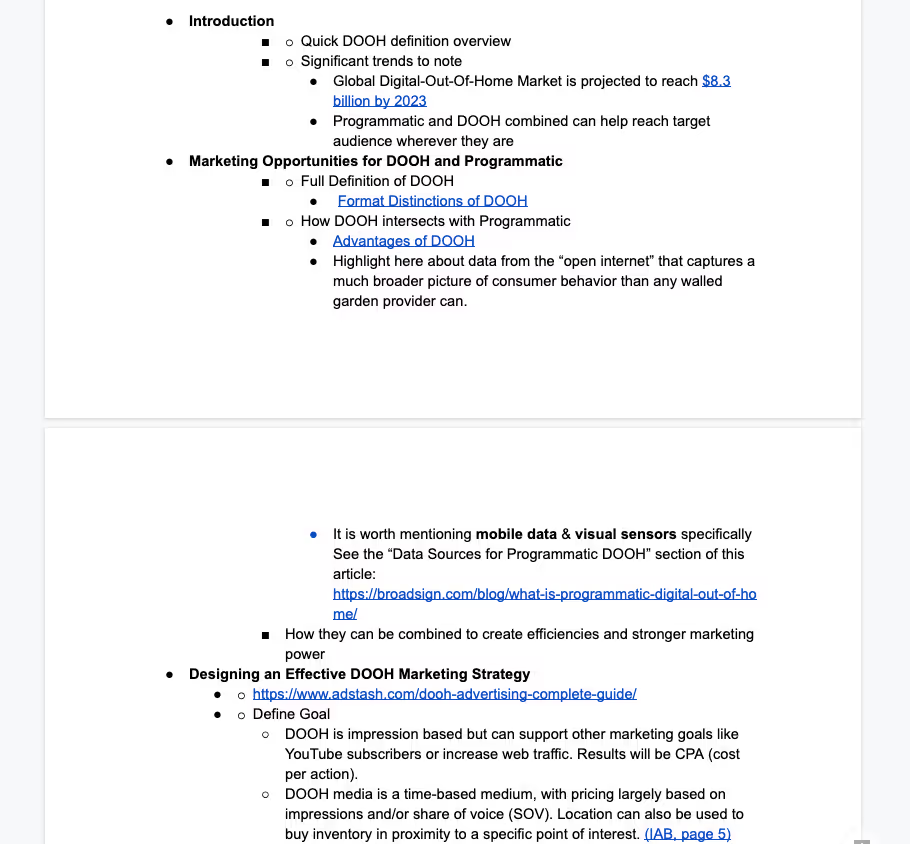
Here, we see a portion of the outline that includes details to add context around what each section will include:
- Outcomes that the target audience will benefit from using DOOH
- Statistics and data to back up certain claims
- Key DOOH metrics to measure, what they mean, and why they’re important
Your outline also provides a canvas for stakeholders to get involved. Including lots of white space and nested bullets will create a hierarchy that’s easy for everyone to follow. Stakeholders can add comments with their thoughts and insights with ease.
Collaborating on an outline will mean fewer draft revisions as the narrative and structure was agreed upon well in advance.
Content briefs are your roadmap
Many marketers see the brief as a hurdle to overcome between having an idea and writing it down.
Your content brief is the compass and your outline is the roadmap. Both allow you to find a gap in the content landscape and uncover an angle that your audience is hungry for and will stand out.
Point in the direction you want to go in, chart a course, and pave the way for content that resonates with your audience.
Learn more about Rand’s journey in this episode of the Demandist podcast.












